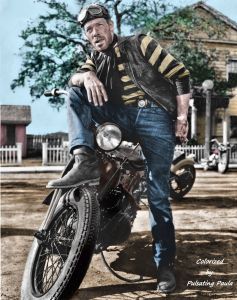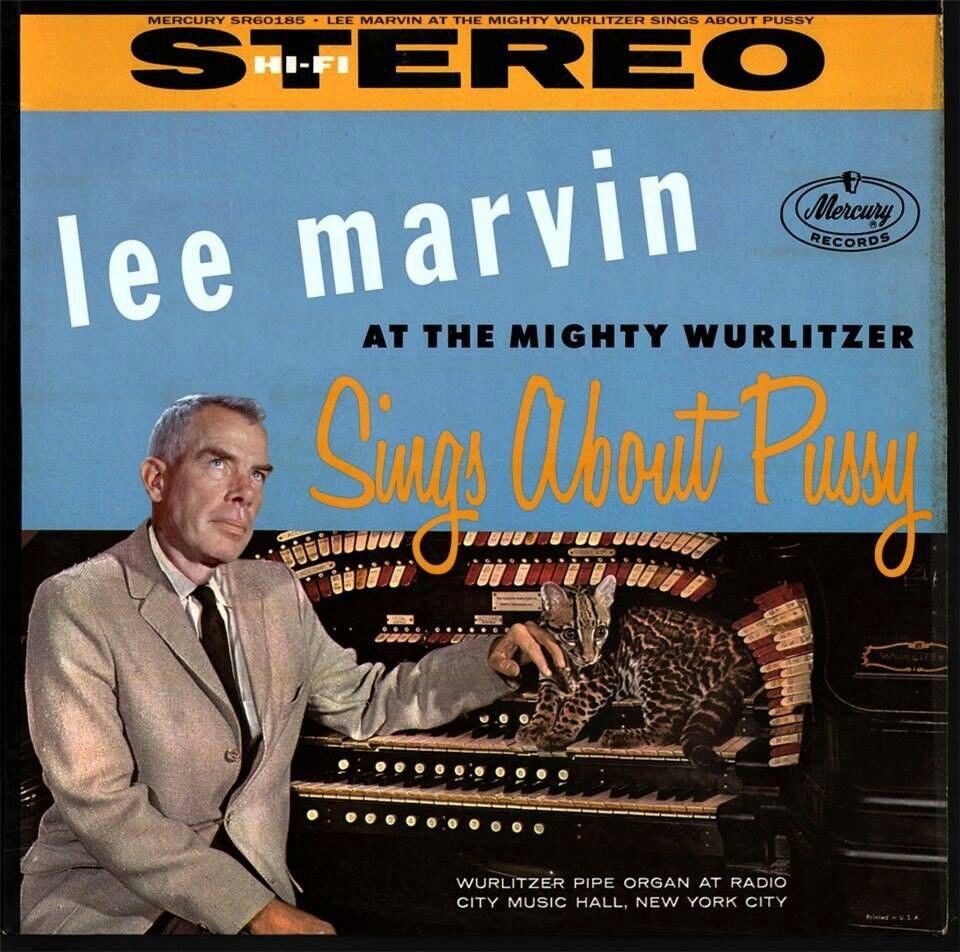I’m old enough to remember Tiny Tim. No, not Dickens’s small Timothy Cratchit (are we ever allowed to forget him?). I mean Tiny Tim, of blessed youthful memory, who, decades ago, sang a 1920s ditty on a 1960s TV show while strumming a uke, and, as a result, became famous. For about the proverbial 15 minutes, that is. From today’s perspective, that’s the Usual Social Media Thing, no big deal. But at that time it was an Experience. Or, in the words of the Sixties—a Happening.

Tiny Tim was unique. Trilling “Tiptoe Through The Tulips” in an eerie, quavering falsetto (heavy on the vibrato) that no one had ever heard the likes of, he was utterly new to an unsuspecting public: Kitsch Heaven, Camp for the Masses, a Spectacle of Cheese (it’s no coincidence that TT came to TV straight from Greenwich Village). Introduced on the most popular mass medium there then was, he became, however briefly, and sweetly, a countercultural icon. Even those of us way too young at the time to grasp the concept of Camp (which was then coming to serious critical attention) understood that Tiny Tim and his tulip-tip-toeing were Something Completely Different.
Appearing on several episodes of the late 1960s television comedy skit show Laugh-In—does anyone here remember the great Laugh-In show? ANYone?—Tiny Tim came, sang, and conquered. Dressed like a Victorian flower child, in ringlets and Pierrot make-up, and with the fey air of someone who’d just stepped down from the moon, he played his ukulele, he crooned his tulip song, he blew kisses to an astounded audience (most of whom probably didn’t ‘get it,’ and no doubt watched, and listened, in disbelief), and he took it all SO seriously. But that was all it took. The gears of fame—or maybe notoriety—started to grind, and suddenly TT was all over the place. He performed on TV, in nightclubs, in concerts, on talk shows, and in Las Vegas; he cut records and did interviews; and his (first) wedding, to TT-styled ‘Miss Vicki,’ a waifish 17-year-old who met TT when she asked for his autograph, and who probably had no idea what the hell she was getting into, was broadcast live on Johnny Carson’s Tonight show and watched by 40 million people. That was the fame of Tiny Tim.

He was a freak (in the best, 1960s sense of the term), a funster, a fenomenon; who seemed as innocent and serene as hippies were supposed to be, and was apparently oblivious to the laughs and snickers that arose as he strummed his way to the bank. But after a few years of being Everywhere, suddenly he was Nowhere—reduced to small-time gigs, forgotten except by devoted fans, his hold on the national imagination dissolved, never to be resurrected. Let’s face it, there’s only so much you can do with a falsetto and a uke. Cliff Edwards had cornered that market some decades before (around the time the original “Tiptoe Through the Tulips” would have been a hit), and poor Mr. Tim never found his own Jiminy Cricket. TT became another relic of the ‘60s, a decade marked by ephemera: Erupting on the national consciousness right after the Summer of Love, then vanishing through a long autumn and an even longer winter. A 9-Days’ Wonder for whom the 10th day came.
Alas, poor Tiny Tim.

So imagine my surprise when, many (many) years later, suddenly I hear Tiny Tim’s recording of “Tiptoe Through The Tulips” popping up in Hell.
A jump cut here (as you will see, quite appropriate): I didn’t find the 2010 horror movie Insidious all that frightening. It’s not a bad film (its concepts of the terrorized family and ‘The Further,’ a combined Alternate Reality, After Life, and Twilight Zone, are pretty good), but it relied on a too-long, hyped-up chain of jump cuts for its shocks—you know, glimpses of nasty faces in the dark. With it came a slew of copycats, clones, and imitations, including the Conjuring series, the Haunting in Connecticut (and other states) series, the Sinister series, and of course Insidious’s own, self-cannibalizing series. All with similar terrorized families, jump scares, faces in the shadows, and too-long running times.
But one thing in Insidious did catch my attention. And that was when, seemingly out of nowhere, we get a scene in which this demon creature, skulking in what looks like Miss Havisham’s attic as designed by Aubrey Beardsley, plays a recording of “Tiptoe Through the Tulips.” And damn if it isn’t the recording made by Tiny Tim:
My reaction was, first, bafflement—why would a demon be playing a recording of this song?—then recognition—good heavens, I know this recording—and then shrieks (mine) of laughter. I’d no idea what this was about, but I thought it was hilarious. The sheer flamboyance of it—here’s this demon camped out in some glitzy Art-Deco/steampunk mélange of gramophones, marionettes, Tiffany lamps, Venetian masks, scarlet lighting, and glam décor, listening to one of the kitchiest records ever made, as he trims and polishes his claws on a knife-grinder wheel. Lordy, is it gaudy. There’s no keeping a true-hearted drama queen down, I guess, not even in Hell. I half-expected, half-hoped, to see a feather boa, a pair of platform heels (assuming they’d fit over the hooves), and a sexy strut à la Carmen Miranda in a glorious Fox musical. Was this scene meant for comedy? I know there’s this serious part, of the father attempting to free his son from the infernal regions (what, this—infernal? I wanna know who’s this demon’s decorator), but how else to take it?
I mean…polishing his nails…
But underneath it all I couldn’t believe my ears. I literally hadn’t heard, or thought of, Tiny Tim’s “Tulips” recording for decades. And now to listen to it—resurrected, at last—in a glossy horror flick that seemed to think this music was, of all things—Scary.
I mean, c’mon. It’s Tiny Tim.

If there’s anything that would make me no longer take a horror movie seriously, it’s one playing TT’s version of “TTTTT” for shock value. For heaven’s sake, this is a love song. It’s sweet and naïve, deliberately so. And it’s not bad singing on TT’s part—strange, yes, but not out of tune or off-key. Yet to hear that pure, clear, vibrato-rich falsetto, quivering with an almost girlish sentiment about moonlight and willows and kisses in the garden, now warbling across a 21st-century cinematic vision of Hell (albeit one conceived as a fin de siècle brothel imagined by Beelzebub), in a slick horror film cynically marketed to viewers some five decades past Laugh-In, Johnny Carson, the 1960s, and the brief TT emergence—it made me feel…out of place. And time. As well as feeling—old. Who would ever have thought Tiny Tim sinister? I sure never did.
Though I have to admit: Inserting Tiny Tim in the film, in this way, was a bit inspired on the part of Insidious’s makers. Out of its own (1960s) context and associations, his recording must sound so weird to today’s folks. That piercing-castrato voice, rising in pitch, never breaking (and never deepening), the tune’s unvarying, calliope-like rhythm, the strummed uke, the quaver, the campiness, the excess of it all—it must now seem grotesque. Like something out of the ether, not of this world. No longer sweet or silly, but…creepy…
How perspectives shift…

Well…OK. So tastes change. As (the fin de siècle) Oscar Wilde was said to have remarked of Charles Dickens’s sentimental and much-wept-over-in-its-time (mid-Victorian) classic, The Old Curiosity Shop: “One must have a heart of stone to read the death of little Nell without laughing.” And now it seems that the hippy-dippy, campy-kitschy, sausage-curled Sweetheart-of-the-Peace-and-Love-Generation—Tiny Tim, my Tiny Tim, who, per YouTube commenters who claimed to have known him, was not only musically knowledgeable but an all-around nice guy—is being used as a bogeyman to frighten children and impressionable teens.
One must need a heart of stone to skew poor, dear Tiny Tim in such insidious fashion.
Alas, again, I say. Shed a tear for Tiny Tim. And for memories of lost youth.

BONUS CLIP: Here’s Tiny Tim, “the toast of Greenwich Village,” in his first appearance on the Rowan & Martin’s Laugh-In TV show in 1968, being introduced by Dan Rowan, and being reacted to (apparently genuinely) by Dick Martin:




